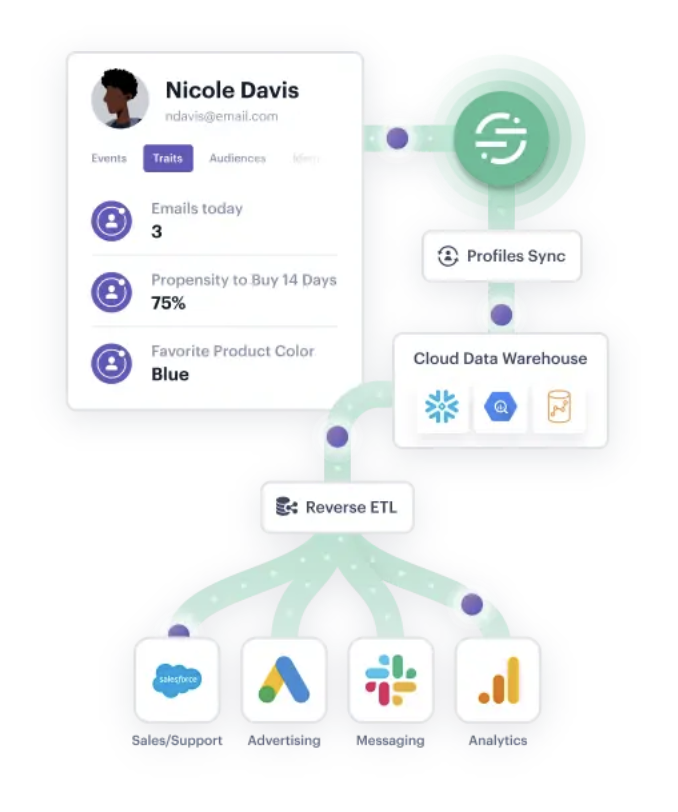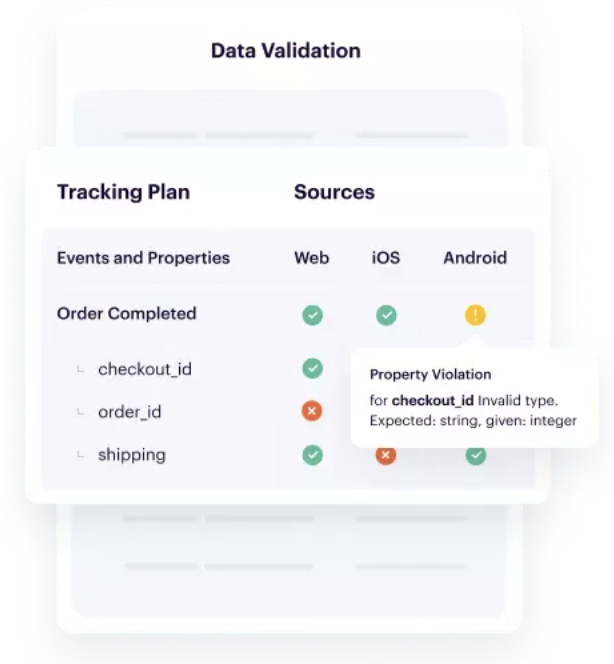How to Create a Customer Personalization Strategy
A comprehensive guide to creating a personalization strategy.
A comprehensive guide to creating a personalization strategy.
The importance of personalized experiences has been well documented. It’s now the starting point for consumers; the deciding factor on whether or not they choose to engage with your business. If an ad isn’t personalized? It’s ignored. If an interaction with a company feels generic? That consumer is likely to seek out a competitor.
But if a company can expertly tailor each customer interaction, consumers are likely to spend 34% more than they would otherwise. In fact, 38% of customers said they would choose a company that offered personalization over a competitor that didn’t – even if the latter was the cheaper or more convenient option.
With customer loyalty, lifetime value, and ROI all hinging on the effectiveness of personalization, it’s no wonder that companies are focused on making the right technological investments to deliver on this expectation.
Below, we highlight a few foundational and effective tools to help implement a personalization strategy.
One of the most important tenets of personalization (and marketing, in general) is to know the customer. Understanding what customers want, what their pain points are, and how and where they interact with your business is essential for implementing personalization.
But as of 2022, 40% of businesses say that getting accurate customer data for personalization is a challenge. And only 35% of companies feel that they are succeeding at omnichannel personalization (or creating a tailored experience for customers across channels).
It makes sense that within a business, different aspects of the customer journey are owned by different teams. But the issue that often arises is that data becomes siloed in different tools that only certain teams have access to. The result is a splintered and incomplete view of how customers are interacting with the various different branches of your business.
To remedy this, companies have increasingly turned to customer data platforms (CDPs) to help ingest, clean, and consolidate customer data. For instance, with a CDP like Segment, businesses are able to trust the accuracy of their data, and democratize it within their organization (i.e., ensuring every team has access to an up-to-date and unified view of customer behavior). Here are a few more reasons as to why CDPs are essential for personalization:
They create a consistent framework for data tracking, to avoid inaccuracies that can crop up from inconsistent naming conventions, duplicate tracking, etc.
They have identity resolution capabilities, which means they can stitch together anonymous customer data once that person becomes known in an organization. (Identity resolution is a key feature for omnichannel personalization.)
It allows for teams to create highly nuanced audience segments and cohorts based on shared behaviors and characteristics.
It allows teams to easily send data to any destination (like a marketing or analytics tool), and comes with over 400 out-of-the-box integrations to lessen engineering efforts.

Email is a highly popular channel, with over 4 billion active users. It’s also been hailed as a key touchpoint for personalization, as it presents an opportunity to engage with people directly.
It can also garner a significant return on investment. One HubSpot study found that businesses gained $42 for every dollar spent on email marketing (which would be a 4,200% ROI). With an email marketing tool, businesses can launch campaigns at scale – whether it’s sending personalized offers, re-engaging cart abandoners, soliciting feedback, and more. And by connecting that email tool to a CDP, marketing teams can craft highly personalized email campaigns or trigger automated sends based on people’s behavior.
Here’s a list of some popular options for email marketing software.
Live chat has become an increasingly popular way to interact with customers. Similar to an instant messenger, live chat can appear on websites or mobile applications to quickly answer customer questions, and provide guidance. And the immediacy of a live chat exchange makes it a favored option among customers (40% of people in one survey said they prefer interacting with chat bots, and 9 out of 10 customers say they choose a retailer based on how much convenience they offer).
Not to mention, live chat can significantly cut costs and streamline internal operations. Customer support agents can often field multiple chats at a time, or an AI bot could help a customer navigate the website (and find the exact product they’re looking for).
Looking for live chat options? Check out this list.
Now that you know what tools to rely on, it’s time to create a framework for your customer personalization strategy. We cover five steps to help get you up and running, and in a position to scale.
Bad data costs businesses millions of dollars each year. From tracking the same user event twice (e.g., “logged_in” versus “log_in”), to missing events altogether, or working off manual data uploads that don’t reflect real-time behavior, poor quality data can skew decision-making and lead to inconsistent customer interactions.

To protect data quality, businesses need to standardize its collection. This begins with creating a data tracking plan to ensure internal alignment on what events are being captured (and their naming conventions). Here’s an example of one of Segment’s tracking plans, if you want a reference. We put together a quick list of what a good tracking plan entails:
Which events and properties are being tracked.
The justification for why these events need to be tracked (e.g., the business KPIs and metrics they relate to).
Where in the code base they need to be added
Their progress and completion (for stakeholder review and approval).
With Segment, you can automatically enforce the tracking plan you create to ensure any event that doesn’t fit within your spec is blocked, to ensure accuracy.
After standardizing data collection – and sending it to a centralized hub for consolidation – it’s important to organize data into a unified customer profile. This profile is a holistic view of a customer's (or an account’s) behavior, interests, and preferences, which is updated in real time.

Here are just a few examples of what could be included in a customer profile:
CRM data
Purchase history
Product/feature usage
Customer Support tickets
Pages/products viewed
Contact information
Job title/firmographic information
And much more.
By having all this data in one place, businesses are able to spot patterns in user behavior and create specific audience segments and cohorts to better target campaigns (more on that below).
Data consolidation also allows businesses to create specific audience segments based on people’s event behavior and traits. You could segment audiences to distinguish between new and established customers, your high-value shoppers versus low-engagement users (and potential churn risks), or a person’s total revenue.
You can also get more granular with your audience segments by experimenting with time constraints, segmentation by funnel stage, or with the help of SQL traits. For instance, using a SQL trait, you could create audiences based on product adoption models, lifetime values, or even common customer support ticket requests.

Research from McKinsey found that most customers use 3–5 channels throughout the customer journey. And for those booking a hotel reservation, they often switched six times between web and mobile channels.
For some customers, they may prefer to reach out to a business via live chat. For others, it's email. Whatever the channel may be, it’s important for businesses to be attuned to these preferences and adjust their engagement strategies accordingly. Not only does this increase customer satisfaction, but it also optimizes marketing spend (by focusing on the channels that have the highest ROI for their customer base).
With centralized data in Segment, businesses can use Computed Traits to calculate which channel a user engaged with the most in a specific timeframe, and then set that as a “preferred channel.” (Check out this recipe for step-by-step instructions on how to do this.)
As people move through the funnel, their needs and interests start to change. As people become aware of your brand, they’re often looking for more high level information. As they move down toward the decision phase, they’re usually after more concrete, product-specific content and exchanges (think competitor comparisons, pricing tiers, free trials, and so forth).
Personalizing marketing campaigns based on funnel stage is a savvy, if not essential, tactic. But to make this plan sustainable, businesses should incorporate automation into their workflows.
To implement this, it’s important to first understand the ultimate goal you’re working toward. When users move through your funnel, is it toward making a purchase? Signing up for an account? Switching to a premium version of a plan tier? From there, you can then start to identify milestone moments in the funnel that are integral to moving customers forward. (On top of that, you can identify when people are at risk of abandoning your funnel and automatically intervene.)
Let’s say you were putting together a push notification campaign. You’d likely be better off targeting new users with messaging around tutorials, step-by-step guides, etc. to ensure they were finding value as quickly as possible. For more long standing customers, who’ve shown high engagement, they would be better suited to notifications about new features, or even NPS or CSAT surveys.

Connect with a Segment expert who can share more about what Segment can do for you.
We'll get back to you shortly. For now, you can create your workspace by clicking below.
Every business will have different goals and KPIs tied to their personalization strategy. But there are a few fundamental steps that are universal.
First, have clear metrics in mind. Are you trying to increase conversions, product adoption, CSAT scores? It’s important to be aligned on what you’re working toward.
Second, standardize data collection to ensure accuracy.
Then, consolidate this data into a centralized hub, and unified user profiles, to have a holistic view of how people interact with your business.
With this consolidated view, begin to segment your customer into audiences based on their behavior, funnel stage, shared traits, etc.
Activate these audiences in your marketing or advertising tools to launch personalized interactions (e.g. surfacing relevant ads, interacting with people on their preferred channels, personalizing landing pages based on job title or interest).
A few examples of customer personalization include:
A customer support representative having a real-time view of a user’s live chat conversation, product usage, etc. to come into a conversation understanding the issue at hand and how to resolve it.
Tailoring newsletter content based on a person’s shown interest in a certain topic.
Targeting users that haven’t yet converted in acquisition campaigns (as opposed to spamming current users with irrelevant ads).
Two key components in a personalization would be: having accurate, first-party data that’s updated in real time (to understand customer behavior, history, and interests), and the tools and technology to act on this data at every touchpoint (e.g. SMS, email, social media, live chat, push notifications, etc.).
Twilio Engage is built on top of Segment’s customer data platform, which allows businesses to integrate all their tools and platforms within minutes. This allows Segment to collect data from every tool used across the organization, and then clean and consolidate it in a central database (and into unified user profiles). This allows every team to work off a holistic view of the customer that updates in real time. Also equipped with native SMS and email, along with hundreds of integrations and communications APIs, businesses can then activate their first-party data in any downstream tool to personalize each customer interaction.